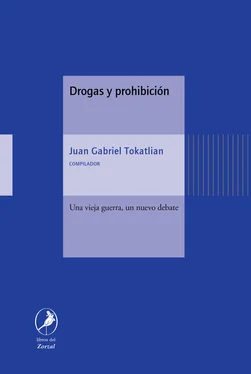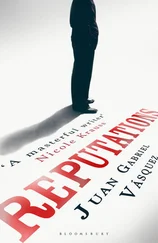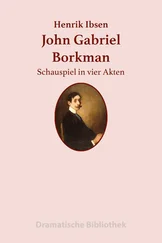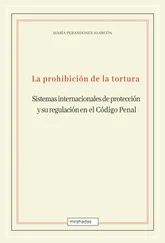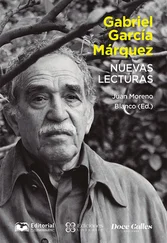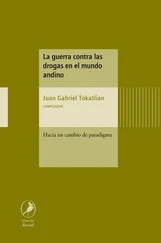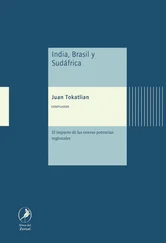Referencias Citadas
United Nations Economic Commission on Narcotics (UN ECN). 2008b. “Making Drug Control fit for purpose”, Building on the UNGASS Decade. Vienna: Economic Social Council (E/Cn.7/2008/CRP.17).
United Nations General Assembly (UN GA). 1998. Declaration on the Guiding Principles of Drug Demand Reduction. United Nations. A/RES/S-20/3 8th September.
United Nations General Assembly (UN GA). 1974. GA Official sixth special session. Declaration on the Establishment of a New Intellectual Economic Order. New York: United Nations. (A/9559).
United Nations (UN). 1961. Single Convention on Narcotics Drugs as amended by the 1972 protocol amending the Single Convention on Narcotics Drugs. United Nations.
Bibliografía
Anuradha K.V.I.N. 2001. “The Flawed Law. Delhi”, Seminar 504, pp.50-54.
Blickman Tom. 1998. Biological Warfare in the War on Drugs, TNI Website septiembre de 1998. Disponible en línea: http:// www.tni.org/ detail_page.phtml?page=persons_blickman (consultado el 17 de marzo de 2009)
Charles, Molly. 2006. “Cannabis and Culture - Impact of Drug Policy on Drug Use and Drug Trade”, PhD Dissertation, Pune: University of Pune. Disponible en línea: http://www.mamacoca_0rg/El_Papel_de_la_coca_june_2008/jan2009/Molly_Charles_cannabis_and_culture.htm
Charles Molly. 2004. Drug Trade Dynamics in India / Reporte presentado para el proyecto “Modeling the World Heroin Market: Assessing the Consequences of Changes in Afghanistan Production”. Disponible en línea: http://laniel.free.fr/INDEXES/PapersIndex/INDIAMOLLY/DRUGSDYNAMICSININDIA .htm
Charles. Molly, K. S. Nair., A. A. Das., y Gabriel Britto. 2002. “Bombay Underworld: A descriptive Account and Its Role in the Drug Trade”, en Globalisation, Drugs and Criminalisation: Final Research Report on Brazil, China, India and Mexico. eds. Christian Geffray, Guilhem Fabre and Michel Schiray. Paris: UNESCO. Editado en CD-Rom.
Charles Molly. 2001a. “The Growth and activities of Organised Crime in Bombay”, International Social Science Journal. No. 169, pp. 359-367.
Charles Molly. 2001b. “Drug Trade in Himachal Pradesh, Role of Socio-economic Changes”. Economic and Political Weekly, 30 de junio; 26: 2433-2439.
Charles, Molly y Gabriel Britto, 2001c. “The Socio-cultural context of drug use and Implication for drug policy”, International Social Science Journal, No:169, pp. 467-474
Charles, Molly, K. S. Nair y Gabriel Britto. 1999. Drug Culture in India-A Street Ethnographic Study of Heroin Addiction in Bombay. New Delhi: Rawat.
Charles M., Maishi E. J., Siddiqui H. Y., Jogarao S. V., D’Lima H., Mehta U y Britto G. 1994.“Culture, Drug Abuse and some Reflections on the Family”. Bulletin on Narcotics 46, pp. 67-86.
Cohen A.D. Peter. 1997. “The relationship between drug use prevalence estimation and policy interests”, en Estimating the Prevalence of Problem Drug Use in Europe, Luxemburg: European Monitoring Centre for Drugs and Drug Addiction. pp. 27-34.
Fisher, J. 1975. “Cannabis in Nepal: An overview”. Rubin, V. (ed.), Cannabis and Culture (247-255), The Hague Mouton Publishers.
Goode. M. S. 2002. “Antidepressants lift clouds, But lose “Miracle Drug” Label”, New York Times, 30 de junio.
Goldstein. R. 2004. “Intimidation, Politics and Drug Industry Cripple U.S. Medicine”, Inter Press Service. 30 de diciembre.
Ganguly K K., Sharma H. K., y Krishnamachari K. A. V. R. 1995. “An ethnographic account of opium consumers of Rajasthan”. Addiction. p. 90, 9-12.
Government of India and Ministry of Law and Justice 1949 Constitution of India. GOI and Ministry of Law and Justice, p. 23.
Ledebur Kathryn. 2009. “Seizing the Moment: The Need to Rebuild US-Bolivian Relations Comments Pertaining to the Review of Bolivia’s Designation as a Beneficiary Country under the ATPTA and ATPDEA-The Andean Information Network”. Disponible en línea: http://foreignaffairs.house.gov/111/led030309.pdf (consultada el 17 de marzo de 2009)
Lawyers Collective HIV/AIDS Unit. 2007. Legal and Policy-Concerns related to IDU and Harm reduction in SAARC Countries, New Delhi: UNODC Regional Office of South Asia (ROSA).
Mansfield David. 2001. “An analysis of licit opium poppy cultivation: India and Turkey”. Disponible en línea: www.geopium.org. (consultado el 17 de marzo de 2009 )
Meetal Pien, Jelsma Martin, Argandona Mario, Soberon Ricardo, Henman Anthny y Echeverria Ximena. 2006. Historical Error the inclusion of the coca leaf in the Single convention. Amsterdam: TNI. mayo 2006: No: 13
Narc and ISRD. 2001. “Undermining Human Heritage Delhi”, Seminar 504 pp. 42-45.
Ranganathan, Shanthi, Jayaraman Rukmani, Thirumagal V. Rao Anitha. 2002. Drug Addiction Identification and Initial Motivation- A field guide for service providers and trainers, New Delhi: Ministry of Social Justice and Empowerment (Government of India) and UNODC.
Rubin, Vera. 1975. Cannabis and Culture. The Hague: The Mouton Publishers.
Spivack, David. 2005. “Feasibility Study on Opium Licensing in Afghanistan”, For the production of morphine and other essential medicine. London: Sensil Council and MF Publishing Ltd.
Tasmania Alkaloid Pty. Ltd. Disponible en línea: http://www.tasalk.com.au/home.html (consultada el 17 de marzo de 2009)
Taylor and Trace 2006. “The Funding of United Nations Office of Drugs and Crime”, An unfinished jigsaw. London: The Beckley Foundation Drug Policy Programme, Reporte 11.
Thoumi, Francisco. 2002. “Anti-Drug Policies and the Competitive Advantage in Illegal Drugs, Mama Coca. Illegal drugs in Colombia: from illegal economic boom to social crisis”. The Annals of the American Academy of Political and Social Science, junio 2002.
The Atlantic. 1982. “Have you ever tried to sell a Diamond?” Disponible en línea: http://www.theatlantic.com/doc/198202/diamond (consultada el 17 de marzo de 2009).
Publicaciones de la ONU
United Nations Economic and Social Council (UNESC). 2008a. World Drug Problem-Drug Demand Reduction Fifth Report of Executive Director. Vienna: Economic Social Council E/CN.7/2008/2/Add.1
United Nations (UN). 2007a. “Multilateral Treaties Deposited with Secretary General Volume 1” Vienna: United Nations. ISBN 978-92-1-133757-0.
United Nations Economic and Social Council (UN ESC). 2007b, World Drug Problem-Action Plan on International Cooperation on Eradication of Illicit Drug Crops and Alternate Development, Vienna: Economic Social Council (E/CN.7/2008/2/Add 2)
United Nations. 2003. Developing an integrated Drug Information System- Global Assessment Programme Toolkit 1. United Nations, New York.
United Nations CND 2005 “Final Budget for the Biennium 2004-2005 and initial budget for the Biennium 2006-2007 for the fund of the United Nations International Drug control program Resolution 48/14”. Disponible en línea: http://www.unodc.org/unodc/ en/comission/CND/09_resolution.html
United Nations (UN). 1988. Convention against Illicit Traffic in Narcotic Drugs and Psychotropic Substances.
United Nations (UN). 1971. Convention on Psychotropic Substances.
United Nations General Assembly (UN-GA). 1960. Statement in the Plenary Meeting of the General Assembly, United Nations, 10 de octubre de 1960. Disponible en línea: http://www.undp.org.za/docs/apartheid/menonti_html (consultado el 17 de marzo de 2009).
Publicaciones de la UNODC
United Nations Office on Drugs and Crime (UNODC). 2008a. “Is poverty driving the Afghan Opium boom”, Discussion Paper, United Nations.
United Nations Office and World Health Organisation (UNODC y WHO). 2008c. “Principles of Drug Dependence Treatment, Discussion Paper. UNODC y WHO.
_______ (UNODC). 2007a. Afghan Opium Survey 2007, Afghanistan: Ministry of Counter Narcotics. Disponible en línea: http://www.unodc.org/unodc/en/crop_monitoring.html
Читать дальше
